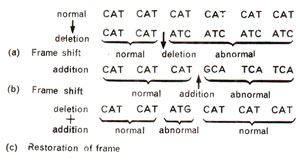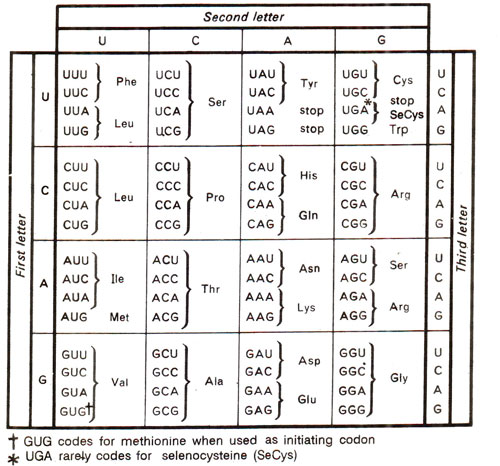Mutations and the genetic code
Most of the work earlier discussed in this section deals with the study of genetic code in cell free systems. Therefore, it could be questioned whether or not this information would apply to the living systems^. With the study of certain mutants, it was possible to show that the genetic code deciphered using cell free systems applies to the living systems also. There are two kinds of mutations which played a very significant role in the study of the genetic code in living systems. These are (i) frameshift mutations and (ii) base substitutions.
Frameshift mutations
The genetic message, once initiated at a fixed point, is read in a definite frame in a series of three letter words. The framework would be disturbed as soon as there is a deletion or addition of one or more bases. There is evidence that mutations induced by acridine dye and related compounds depend on addition or deletion of single bases. When such frameshift mutations were intercrossed, in certain combinations they gave wild type.
Base substitutions or amino acid replacements
If in a mRNA at a particular point, one base pair is replaced by another without any deletion or addition, the meaning of one codon containing this altered base will change as discussed in Mutations: 3. Molecular Level (Mechanism). Consequently, in place of a particular amino acid at a particular position in a polypeptide, another amino acid will be incorporated. Such mutations have been studied in detail in enzyme tryptophan synthetase. By working out the altered amino acid sequences in the polypeptides, some conclusions regarding the possible changes in the base-sequence in RNA can be easily made,






